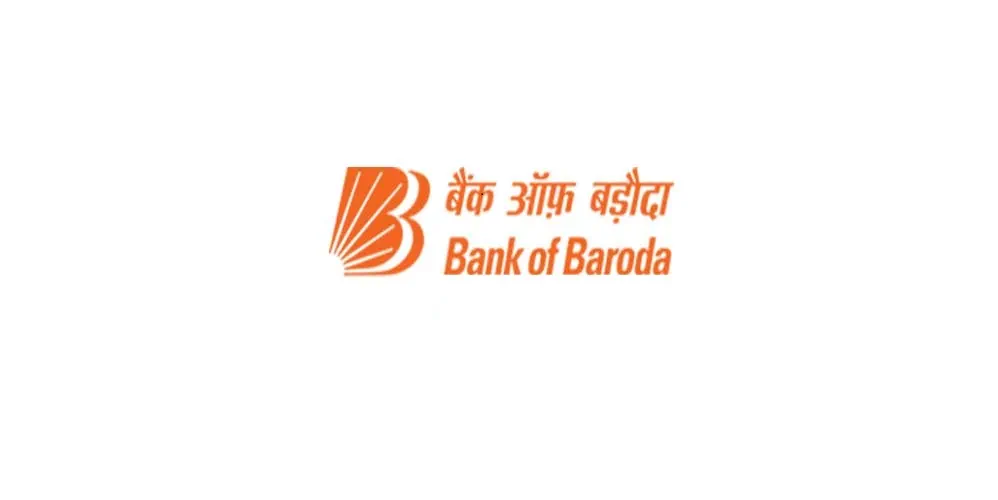
वरिष्ठ नागरिक बचत योजना के बारे में आप सभी को पता होना चाहिए
22 दिसम्बर 2023

बुढ़ापा आने पर अक्सर हमारे जीवन में अनिश्चितता आती है। वरिष्ठ नागरिकों से लोग अक्सर उनके स्वास्थ्य व अन्य बातों के साथ साथ उनकी वित्तीय स्थिति पर चर्चा करते हैं।भारत सरकार ने वरिष्ठ नागरिकों के लिए वित्तीय सुरक्षा के महत्व को ध्यान में रखते हुए वरिष्ठ नागरिक बचत योजना ( एस सी एस एसज़ज़ )की शुरुआत की है।
एससीएसएस के लिए कौन पात्र है?
- 60 वर्ष व इससे अधिक आयु के भारतीय निवासी।
- 55 वर्ष से अधिक लेकिन 60 वर्ष से कम उम्र के भारतीय निवासी जो स्वैच्छिक सेवानिवृत्ति योजना के अंतर्गत सेवानिवृत्त हुए हैं अथवा जिनकी सेवानिवृत्ति सामान्य रूप से हुई है। इसके अंतर्गत, सेवानिवृत्ति लाभ की प्राप्ति के एक महीने के भीतर एससीएसएस खाता खोला जाना आवश्यक है।
- विशेष नियम व शर्तों को पूरा करने वाले सेवानिवृत्त रक्षा कर्मी (रक्षा नागरिकों को छोड़कर) भी 50 वर्ष की आयु होने पर इस योजना का लाभ उठा सकते हैं।
अनिवासी भारतीय, भारतीय मूल के व्यक्ति और हिंदू अविभाजित परिवार के सदस्य एससीएसएस के लिए पात्र नहीं हैं।
एससीएसएस सुविधा का लाभ कैसे उठाया जा सकता है?
कोई भी पात्र व्यक्ति निजी या सार्वजनिक क्षेत्र के बैंक या भारतीय डाकघर के माध्यम से इस योजना का लाभ उठा सकता है। केंद्र सरकार की योजना होने के कारण, एससीएसएस योजना के नियम व विनियम आदि सभी संस्थानों में एक समान होते हैं।
एससीएसएस पर देय ब्याज दर क्या है?
एससीएसएस पर ब्याज दर प्रत्येक तिमाही में परिवर्तित होती है। प्रत्येक तिमाही में इसकी गणना करके ब्याज की राशि खाते में जमा की जाती है । वर्ष 2023-24 यानी अक्टूबर- दिसंबर 2023 की चालू वित्तीय तिमाही के लिए निर्धारित ब्याज दर 8.2% है।
जमा राशि की न्यूनतम और अधिकतम सीमा कितनी है ?
एस.सी.एस.एस की सुविधा प्राप्त करने वाले व्यक्ति अपने खाते में एकमुश्त राशि जमा कर सकते है: इस खाते में न्यूनतम रु 1000/- तथा अधिकतम रु 15,00,000/- की राशि जमा की जा सकती है इसके अंतर्गत रु 1000/- से अधिक की राशि रु 1000/- के गुणकों में जमा की जाएगी।
इस योजना के अंतर्गत धनराशि कब परिपक्व होगी?
इसके अंतर्गत जमा की गई राशि खाता खोलने की तारीख से 5 वर्षों के पश्चात परिपक्व होती है। खाताधारक द्वारा अपने खाते को 3 वर्ष की अवधि तक बढ़ाया जा सकता है। तथापि, परिपक्वता विस्तार हेतु आवेदन खाता परिपक्वता के एक वर्ष के भीतर प्रस्तुत की जानी चाहिए।
वरिष्ठ नागरिक योजना कर देयता के अंतर्गत देय ब्याज कितना होता है?
- आयकर अधिनियम, 1961 की धारा 80 सी के अंतर्गत एससीएसएस की जमा राशि पर कर से छूट प्रदान किया गया है। तथापि , एससीएसएस कर लाभ की सीमा रु 1, 50, 000 है।
- वित्तीय वर्ष के दौरान रु 50, 000 से अधिक की ब्याज राशि पर, टीडीएस लागू होता है
एससीएसएस के विभिन्न लाभ क्या हैं ?
- सरकारी पहल होने के नाते, जमाकर्ता को सरकारी योजनाओं के अंतर्गत सुरक्षा प्रदान की जाती है। इसका तात्पर्य यह है कि, जमाकर्ता पर अर्थव्यवस्था का प्रभाव नहीं होगा।
- वरिष्ठ नागरिक बचत योजना कर लाभ अपनी धनराशि की बचत का एक अच्छा माध्यम है क्योंकि आयकर अधिनियम, 1961 की धारा 80 सी के तहत एससीएसएस कर कटौती योग्य है।
- वित्तीय आपात स्थिति के मामले में, जमाकर्ता लागू दंड के साथ समय से पहले अपनी राशि आहरित कर सकता है।
एस सी एस एस की कार्यप्रणाली से आप यह समझ सकते हैं कि यह आपके लिए एक उत्कृष्ट वित्तीय विकल्प है ।
Popular Articles
What is Tenure in a Personal Loan and How to Choose the Loan Tenure Smartly?
Related Articles



What is CVV on a Debit Card? Understanding Its Importance and Security Features


How to Update Your FASTag KYC: Step-by-Step Guide for Online & Offline Methods




The Importance of Pension Funds: Secure Your Future with Steady Retirement Income

-
डिस्क्लेमर
इस लेख/इन्फोग्राफिक/चित्र/वीडियो की सामग्री का उद्देश्य केवल सूचना से है और जरूरी नहीं कि यह बैंक ऑफ बड़ौदा के विचारों को प्रतिबिंबित करे। सामग्री प्रकृति में सामान्य हैं और यह केवल सूचना मात्र है। यह आपकी विशेष परिस्थितियों में विशिष्ट सलाह का विकल्प नहीं होगा । बैंक ऑफ बड़ौदा और/या इसके सहयोगी और इसकी सहायक कंपनियां सटीकता के संबंध में कोई प्रतिनिधित्व नहीं करती हैं; यहां निहित या अन्यथा प्रदान की गई किसी भी जानकारी की पूर्णता या विश्वसनीयता और इसके द्वारा उसी के संबंध में किसी भी दायित्व को अस्वीकार करें। जानकारी अद्यतन, पूर्णता, संशोधन, सत्यापन और संशोधन के अधीन है और यह भौतिक रूप से बदल सकती है। इसकी सूचना किसी भी क्षेत्राधिकार में किसी भी व्यक्ति द्वारा वितरण या उपयोग के लिए अभिप्रेत नहीं है, जहां ऐसा वितरण या उपयोग कानून या विनियमन के विपरीत होगा या बैंक ऑफ बड़ौदा या उसके सहयोगियों को किसी भी लाइसेंसिंग या पंजीकरण आवश्यकताओं के अधीन करेगा । उल्लिखित सामग्री और सूचना के आधार पर किसी भी वित्तीय निर्णय लेने के लिए पाठक द्वारा किए गए किसी भी प्रत्यक्ष/अप्रत्यक्ष नुकसान या देयता के लिए बैंक ऑफ बड़ौदा जिम्मेदार नहीं होगा । कोई भी वित्तीय निर्णय लेने से पहले अपने वित्तीय सलाहकार से सलाह जरूर लें।
7 PPF Account Benefits You Should know About
If you are looking for a low-risk investment option, a Public Provident Fund or PPF is the answer for you. It is a long-term investment tool that helps you save money as well as enjoy tax benefits. The returns on a PPF investment are high, too, making it one of the most popular investment products of India. PPF account and its benefits are endless but here are seven top benefits you should know about:
Low risk: One of the biggest Public Provident Fund benefits is that it is a safe investment product. Since PPF account is not linked to any markets and is backed by the Government of India, an important PPF account benefit is that it has little to no risk. The returns on your investment are guaranteed by the government, so you can invest in a PPF and relax. An additional PPF account benefit is that if, unfortunately, you default on your debts, the funds in your PPF account cannot be attached by a court order to pay off the debt.
Tax benefits: Any investment up to Rs 1.5 lakh in a year into a PPF account is eligible for tax benefits under section 80C of the Income Tax Act. So your investments will be deducted from your taxable income. Another Public Provident Fund tax benefit is that the interest you earn on your investment is completely tax free.
Nomination benefits: A PPF account can be opened by anybody, including minors. Minors can invest in a PPF account under the guidance of a legal guardian. An important public provident fund benefit is that the account comes with a nomination option. So, you can nominate a beneficiary to your account in the unfortunate case of your death.
No minimum limit: With a PPF account, there is no minimum limit on deposits. You can start as low as Rs 500 and go on increasing the funds up to Rs 1.50 Lakhs.
Good returns: While you have the liberty to invest as low as you want, your returns are guaranteed by the Government of India. One of the PPF account benefits is you can also decide if you want to invest monthly or at once. For Quarter Jan-Mar 2020, the interest rate on a PPF account is 7.9% compounded annually.
Liquidity and loan facilities: A PPF account goes a long way at your time of need. One of the PPF account benefit is that you are eligible to get a loan from the Bank against a PPF account you hold with them from the 3rd F.Y. till end of 6th FY. In case of emergency, you can also make partial withdrawals from your PPF account on completion of five years from the end of the year in which the account was opened.
Flexible tenure: A PPF benefits after 15 years when the account tenure is over. Upon maturity you can decide to withdraw the entire amount or further invest in the PPF for an additional five years by applying for account extension within one year of maturity.
These are the top benefits of a PPF account. There are more advantages such as a PPF account can be transferred from your bank to a post office or other bank near you. You can also have your PPF account moved to a different Bank of Baroda branch. To invest in a safe and reliable investment tool, click here.
Benefits of Life Insurance
Life insurance is a must in today’s world. Modern living is an expensive business, and people have to bear the burden of huge costs like children’s education, EMIs on home loans, healthcare and so on. So it is important for every earning member to have a life insurance policy to protect the financial interests of his or her family. There are many benefits of life insurance policy, which we will look at in this article.
Features of life insurance
Let’s look at the features and advantages of life insurance policy:
Protection: The first and foremost objective of a life insurance policy is to ensure the financial protection of your family, and this could include dependent parents, spouse, children or siblings. The demise of the sole earning member could put dependents to considerable hardship, especially since cost of living is very high these days. Life insurance gives you the assurance that your family members will be looked after in the event of your untimely demise.
Contract: Life insurance is basically a contract between the insurers and the individual who takes out the policy. You pay premiums every quarterly/half yearly/yearly to the company. In return, the insurer will give a lump sum to your family in the event of your demise.
Premiums: Premiums are paid quarterly / half yearly which you need to pay to get life insurance. The amount will vary from person to person, depending on the tenure of the policy, age of the policyholder, health and type of policy.
Affordable: Life insurance is an affordable way of ensuring the financial well-being of your family. Premiums on policies, particularly term insurance, are quite low and worth your while for the protection they offer.
Easy to buy: Buying insurance from company is quite easy. Insurance companies have specified persons, who will visit you at your home or office and help you with options and paperwork. You can also do it online at your convenience.
Tax benefits: Another one of the benefits of life insurance policy is that you can deduct the premiums you have paid from your taxable income. Under Section 80C of the Income Tax Act.
Savings: There are some life insurance products that combine savings and insurance. This can be a good way of saving for the future and protecting your family at the same time
Types of life insurance
Now that we’ve seen the essential features of life insurance policy, let’s look at the types:
Term insurance
This is the most basic, and most popular, of life insurance policies. You purchase a policy for a certain period for which you pay premiums. For example, if a policyholder wants a policy till the age of 60, he or she can take one. And if the policyholder passes away before 60, the nominee is paid the death benefits.
Unit-linked Insurance Plan
A Unit-Linked Insurance Plan (ULIP) combines investment with insurance. At the end of the policy, the policyholder gets a certain sum. This is unlike a term plan where the payout is made only on the death of the policyholder. Part of the premium is paid for life insurance, while the remainder is invested in either stocks or bonds, depending on the investor’s risk appetite and investment goals. The investments yield returns which are then given to the policyholder after the end of the policy period

